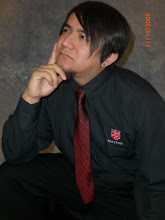Internal Assets – Positive Values
In working with Children at risk, we see that the behave is the reflect of what the know and see in the spaces where they more spent time, it could be their houses, their school or their after school programs.
In order to develop Positive Values it is important to use to break in some of those areas; if we get to connect to the children giving them a learning experience where they can understand that behave would bring more good times that bad ones, or that it would bring more benefit that punishment.
But it is hard to work at this level when we spent couples of hours a day with the children, and we don’t have any connection with what is happening out side our program, and in order to create Positive Values in the children we might need to work with other programs or institutions that share the children time, it could be the school, church, clubs, children houses etc.
It is necessary the complete involvement in the children lives and time to create in them Positive Values, it is know that if we repeat a behave [good or bad] for a not so large period of time, it behave get recorder in the brain and it will continue to happened for the rest of the life, but to create this kind of responds it is necessary to involve time and resources, and willingness to do it, and to mean it,
Thursday, May 22, 2008
40 Developmental Assets for Adolescents
External Assets – Support
One of the point we discussed when we were talking about this strategy, was how important is to create good relationship with those whom we work with, in the case of a Youth Worker it would be the children.
Support, as a External assets is founded in relationship, I believe that without this elementary level of interaction any further effort will be unfruitful, this is because with our relationship there is not communication, trust, or belief in each other.
It is so graphic for us when we see the children at risk the lack of good relationship, they are surrounded by poverty, unfulfilled needs, lack of love, lack of goodness, we can say lack of God.
We as workers of the Kingdom of God, we were call to bring Heaven to Earth, to keep the Love of God represented through Jesus Christ and to take it to were it is need, take it to those children at risk.
When we talk about support it is not just to say Yes, you can do it, it means also to say No, but to say it with love, and with reason, most of the time we say to the children to behave but we don’t tell them how to behave.
There is different kind of supports in this tool, we have Family support, Positive Family communication, other adult relationships, caring neighborhood, caring school climate, parent involvement in schooling.
In Children at Risk there is probably lack of Family Relationships, but we as Program can gave them a good environment of caring, and support with other responsible adults taking care of them, and other institutions that show it support to the children given them the opportunity of participate in activities like visits to museum and to the park.
But the more important part in this desire of support children at risk, is creating positive Relationships.
One of the point we discussed when we were talking about this strategy, was how important is to create good relationship with those whom we work with, in the case of a Youth Worker it would be the children.
Support, as a External assets is founded in relationship, I believe that without this elementary level of interaction any further effort will be unfruitful, this is because with our relationship there is not communication, trust, or belief in each other.
It is so graphic for us when we see the children at risk the lack of good relationship, they are surrounded by poverty, unfulfilled needs, lack of love, lack of goodness, we can say lack of God.
We as workers of the Kingdom of God, we were call to bring Heaven to Earth, to keep the Love of God represented through Jesus Christ and to take it to were it is need, take it to those children at risk.
When we talk about support it is not just to say Yes, you can do it, it means also to say No, but to say it with love, and with reason, most of the time we say to the children to behave but we don’t tell them how to behave.
There is different kind of supports in this tool, we have Family support, Positive Family communication, other adult relationships, caring neighborhood, caring school climate, parent involvement in schooling.
In Children at Risk there is probably lack of Family Relationships, but we as Program can gave them a good environment of caring, and support with other responsible adults taking care of them, and other institutions that show it support to the children given them the opportunity of participate in activities like visits to museum and to the park.
But the more important part in this desire of support children at risk, is creating positive Relationships.
Subscribe to:
Comments (Atom)
